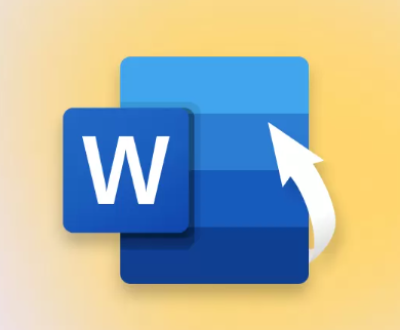How to Recover Deleted Photos on an SD Memory Card
Accidentally deleting photos from an SD memory card can be a frustrating experience, but the good news is that the deleted data is often recoverable.
1. What Happens When Photos Are Deleted From an SD Card
When you delete photos from an SD card, whether by mistake or on purpose, the data doesn’t disappear immediately. Instead, the system marks the space previously occupied by the deleted files as “available for new data.” Until new files are written to the card and overwrite this space, your deleted photos can still be recovered using the right methods and software.
SD cards work by organizing data into sectors. When a photo is deleted, the card’s file system simply removes the entry pointing to the file but does not immediately erase the actual data from the sectors. This is why it is crucial to stop using the card as soon as possible after deletion to prevent overwriting.

2. Key Factors Affecting Photo Recovery
There are several factors that influence your chances of successfully recovering deleted photos from an SD card. Understanding these factors can help improve your recovery success rate:
Card Usage After Deletion: The most important factor is whether new data has been written to the card since the deletion. If new files have been added, they may overwrite the space where your deleted photos were stored, making recovery more difficult or impossible.
Type of Deletion: If you deleted the photos by selecting “delete” on your camera or computer, the data may still be recoverable. However, formatting the SD card can make recovery more challenging, depending on whether a quick format or a full format was performed (a full format overwrites data).
File System Corruption: In cases where the SD card’s file system becomes corrupted, the deleted files may still exist but could be harder to recover. Specialized tools are often required in these cases.
3. Preparing for Recovery: Dos and Don’ts
Before starting the recovery process, there are several important precautions you should take to maximize your chances of success:
Stop Using the SD Card Immediately: As soon as you realize photos have been deleted, stop using the SD card. This prevents new data from overwriting the deleted files.
Avoid Formatting the Card: Do not format the SD card unless it’s necessary for other recovery options, as formatting can complicate recovery.
Remove the SD Card Safely: Always eject the SD card properly from your camera, phone, or computer. Sudden removal during read/write operations can cause file corruption.
Create a Backup: If possible, create a bit-by-bit backup (also known as an image file) of the SD card using disk imaging software. This ensures that you have a copy of the current state of the SD card in case anything goes wrong during the recovery process.
4. Methods to Recover Deleted Photos From an SD Card
There are various methods to recover deleted photos, depending on your specific situation. We’ll outline the steps for both software-based recovery and professional data recovery services.
Method 1: Using Data Recovery Software
Most deleted photo recovery processes start with data recovery software. These tools are designed to scan the sectors of your SD card, locate deleted files, and restore them. Below are some of the best software options for recovering deleted photos from an SD card:
4.1. Panda Assistant (Windows)
Panda Assistant is a cutting-edge data recovery software designed to restore lost or deleted files from various storage devices, including hard drives, SD cards, USB drives, and more. With its user-friendly interface and advanced recovery algorithms, Panda Assistant makes data recovery accessible to both tech-savvy users and beginners alike.
Key Features
Comprehensive File Recovery: Whether you’ve lost data due to accidental deletion, formatting, or corruption, Panda Assistant is equipped to recover a wide range of file types such as photos, videos, documents, and emails. It supports all major file systems, including NTFS, FAT, exFAT, and HFS+.
Wide Device Compatibility: Panda Assistant works seamlessly with multiple devices, including internal and external hard drives, SSDs, SD cards, USB drives, and even digital cameras. This versatility ensures you can recover files from virtually any storage medium.
Deep Scan Technology: The software’s powerful deep scan feature meticulously searches every corner of your storage device to retrieve even the most elusive files. This function is particularly useful when files are heavily fragmented or stored in corrupted sectors.
Preview Before Recovery: One of Panda Assistant’s standout features is its preview option. Before committing to a full recovery, users can preview recoverable files, ensuring they select only the necessary data, saving time and storage space.
Easy-to-Use Interface: With its intuitive design, Panda Assistant is perfect for both beginners and professionals. The step-by-step recovery process requires no technical expertise, making it accessible to anyone in need of recovering their lost files.
Secure and Reliable: Panda Assistant ensures that no further damage is done to your storage device during the recovery process. Its non-destructive recovery ensures that your data remains intact and secure throughout the process.
4.2. EaseUS Data Recovery Wizard (Windows and Mac)
EaseUS is another powerful recovery software that works across different operating systems. Follow these steps:
Download and Install: Download and install EaseUS Data Recovery Wizard on your computer.
Insert the SD Card: Use a card reader to connect the SD card to your computer.
Scan the SD Card: Open EaseUS and select the SD card from the list of drives. Click “Scan” to begin searching for deleted files.
Preview and Recover: EaseUS allows you to preview files before recovering them. Once the scan completes, review the recoverable photos and select the ones you need to restore. Save them to a new location.
4.3. Disk Drill (Windows and Mac)
Disk Drill is a highly-rated recovery tool with a clean interface, making it easy for both beginners and advanced users to recover files. The steps are as follows:
Download and Install Disk Drill: Install Disk Drill on your computer.
Connect the SD Card: Insert the SD card into your computer using a card reader.
Scan the SD Card: In Disk Drill, select the SD card from the list of drives and click “Recover.” Disk Drill will perform a scan and identify deleted files.
Recover Your Photos: Once the scan is complete, review the files and choose the photos you want to recover. Save them to a new location to avoid overwriting any data.
4.4. PhotoRec (Windows, Mac, Linux)
PhotoRec is an open-source recovery tool that specializes in recovering media files like photos. While its interface is less user-friendly, it’s highly effective. Here’s how to use it:
Download and Install PhotoRec: Install PhotoRec from its official website.
Run the Program: Open PhotoRec. It works through the command-line interface (CLI), but don’t be intimidated. It provides step-by-step instructions.
Select the SD Card: Choose the SD card as the drive to scan.
Scan for Deleted Photos: Select the file types you want to recover (e.g., JPG, PNG) and begin the scan.
Recover the Files: Once the scan completes, PhotoRec will list recoverable files. Copy these to a new location.
4.5. Stellar Photo Recovery (Windows and Mac)
Stellar is dedicated to recovering multimedia files, including photos and videos. Here’s the process:
Download and Install Stellar Photo Recovery: Install the software on your computer.
Connect the SD Card: Use a card reader to connect the SD card to your computer.
Select and Scan: Choose the SD card from the list and click “Scan.”
Preview and Recover: Once the scan completes, preview the deleted photos and recover them to a different location.
Method 2: Using Professional Data Recovery Services
If you are unable to recover your photos using software or if the SD card is physically damaged, you may need to use a professional data recovery service. These services use specialized equipment to recover data from SD cards that have been corrupted, damaged, or are otherwise inaccessible.
When to Use Professional Recovery Services:
The SD card is physically damaged (e.g., water or fire damage).
The card is not being recognized by the computer or any other device.
Data recovery software is unable to retrieve the deleted files.
How Professional Services Work:
Diagnostic Process: Most services will first run a diagnostic test to assess the condition of the SD card. They may determine whether the card has physical damage or logical (software) issues.
Data Recovery Process: Professional services often work in clean rooms and use advanced techniques to recover files from physically damaged SD cards. For example, they may repair broken connections or bypass damaged areas to extract data.
Cost of Recovery: The price of professional recovery varies depending on the complexity of the issue. Recovery from a damaged SD card can cost anywhere from $100 to several hundred dollars, depending on the service provider.
Top Professional Recovery Services:
Ontrack Data Recovery
DriveSavers
Gillware Data Recovery
Secure Data Recovery
Most professional recovery services offer a “no data, no fee” policy, meaning you only pay if they are able to recover your photos.
5. Best Practices for Preventing Future Data Loss
To minimize the risk of losing important photos in the future, follow these tips:
Regular Backups: Always back up your photos to an external hard drive, cloud storage, or another reliable storage medium. Regular backups can save you from a data loss disaster.
Use High-Quality SD Cards: Invest in reputable, high-quality SD cards from trusted brands like SanDisk, Kingston, or Samsung. Cheap or counterfeit cards are more prone to corruption and failure.
About us and this blog
Panda Assistant is built on the latest data recovery algorithms, ensuring that no file is too damaged, too lost, or too corrupted to be recovered.
Request a free quote
We believe that data recovery shouldn’t be a daunting task. That’s why we’ve designed Panda Assistant to be as easy to use as it is powerful. With a few clicks, you can initiate a scan, preview recoverable files, and restore your data all within a matter of minutes.
Subscribe to our newsletter!
More from our blog
See all postsRecent Posts
- How to recover accidentally deleted files 2025-07-01
- How do i recover a file i accidentally deleted 2025-07-01
- How to recover an accidentally deleted file 2025-07-01

 Try lt Free
Try lt Free Recovery success rate of up to
Recovery success rate of up to









